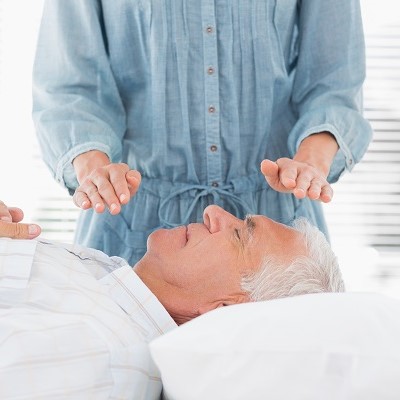 Over the last decade, we have watched health and wellness increase in popularity. More importantly, holistic health. Phrases like alternative medicine, mindfulness meditation and energy healing have become more commonplace than ever before, as has Reiki. More and more people are looking for more natural methods of healing than what is offered by medical science.
Over the last decade, we have watched health and wellness increase in popularity. More importantly, holistic health. Phrases like alternative medicine, mindfulness meditation and energy healing have become more commonplace than ever before, as has Reiki. More and more people are looking for more natural methods of healing than what is offered by medical science.
For many choosing some form of CAM (Complementary and Alternative Medicine) is a more viable choice than going to their doctor. Of course, you should always consult with your physical before seeking any alternative treatment methods.
While more people are familiar with Reiki than before, most of them don’t truly understand what it is or how it works. There are plenty of misconceptions out there, but we want to set them straight.
What is Reiki?
It is energy healing, but a hands-on method. It helps promote relaxation, reduce stress, and can also clear any blockages in your aura or physical body. It was developed in Tibet. However, it was a forgotten art that a Japanese doctor rediscovered just over a century ago.
What does a session look like? Well, you can lie on a table, sit in a chair or whatever is comfortable for you. You remain fully clothed during the session, there is no need for any undressing. The Reiki practitioner will lay hands on your chakras – this may or may not include direct touching.
Typically, their hands will hover. What you will notice is that even though they don’t touch you, you start to feel heat where their hands are placed. This is energy.
The Benefits of Reiki
There are numerous benefits to Reiki. After a single session, many people feel more relaxed and calmer. Additionally, Reiki can provide relief from physical pain, including headaches and chronic pain. It can also speed up the healing process after a patient undergoes surgery.
Similar to meditation, a Reiki session can also put you in a more aware and mindful state.
Does Science Support Reiki?
In a word… yes. There have been several studies that show Reiki can reduce blood pressure, published in the Journal of Alternative and Complementary Medicine. These studies also suggest Reiki can slow down heart rates as well as oxygenate the blood. Of course, one can also point to the anecdotal evidence that is available.
What a Session Looks Like
We mentioned earlier that a client with lie down or sit in a chair, always fully clothed. If on a table, the patient will be face up. The practitioner will place their hands above the body and serve as the energy channel. Ultimately, it’s the client’s mind that is directing the healing process, the practitioner is just a tool to be used.
Typically, a practitioner will ask that you complete an intake form. This will allow your Reiki master the opportunity to customize your session based on your preferences and needs. You should wear clothing that is both comfortable and loose-fitting.
You should also ensure you are well hydrated before your session and continue this after the fact. Clients often become sensitive to temperature during Reiki sessions so, you should consider dressing in layers and wearing thick socks.
It’s also just as important to arrive with an open mind. It’s all about your subconscious mind so, to be healed your mind needs to be open to being healed.
After your session, you may want to take some quiet time for yourself. A warm bath with Epsom salts is an excellent way to complete the process. If you can’t manage this, a calming cup of herbal tea is also a great idea.






